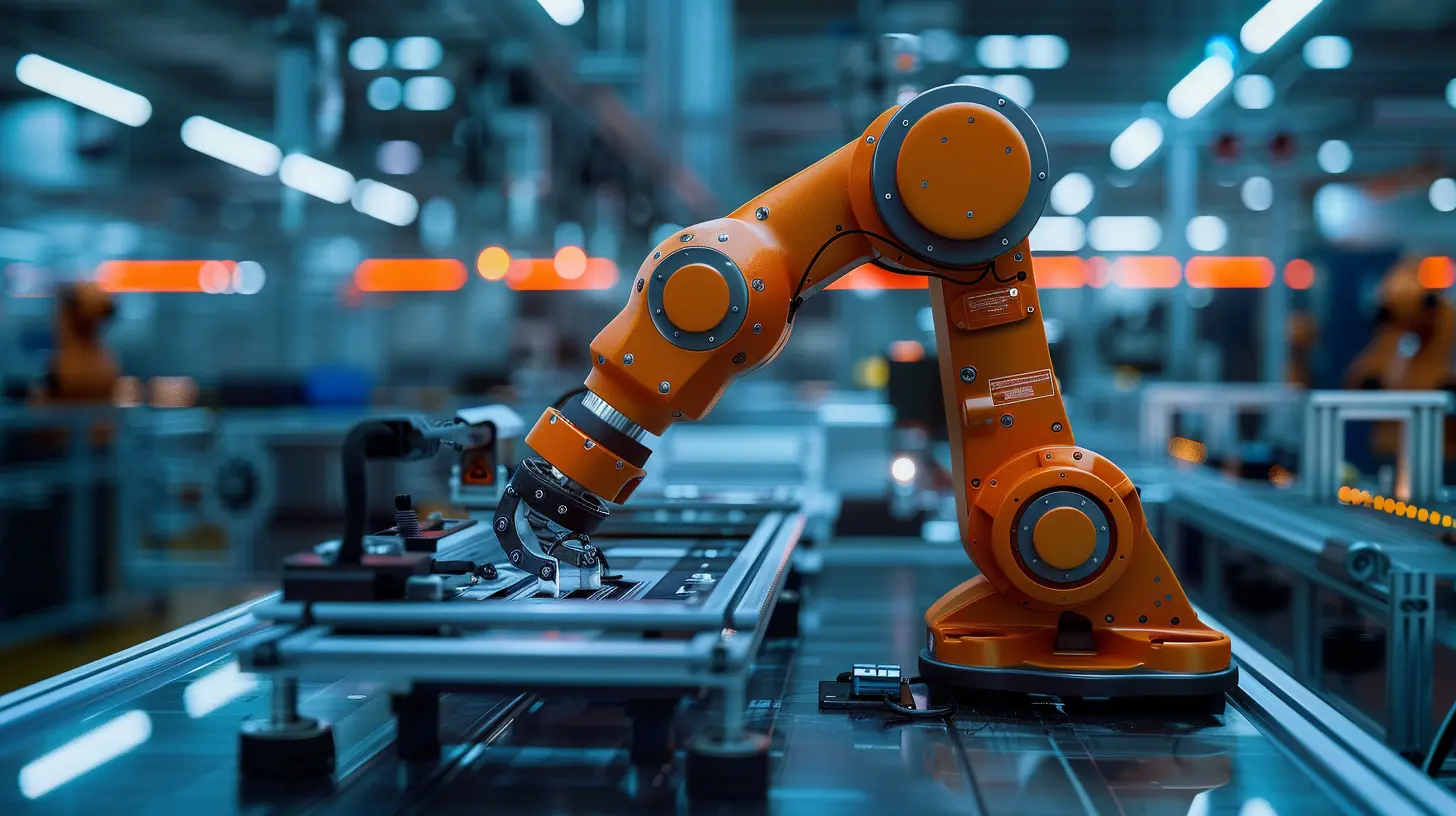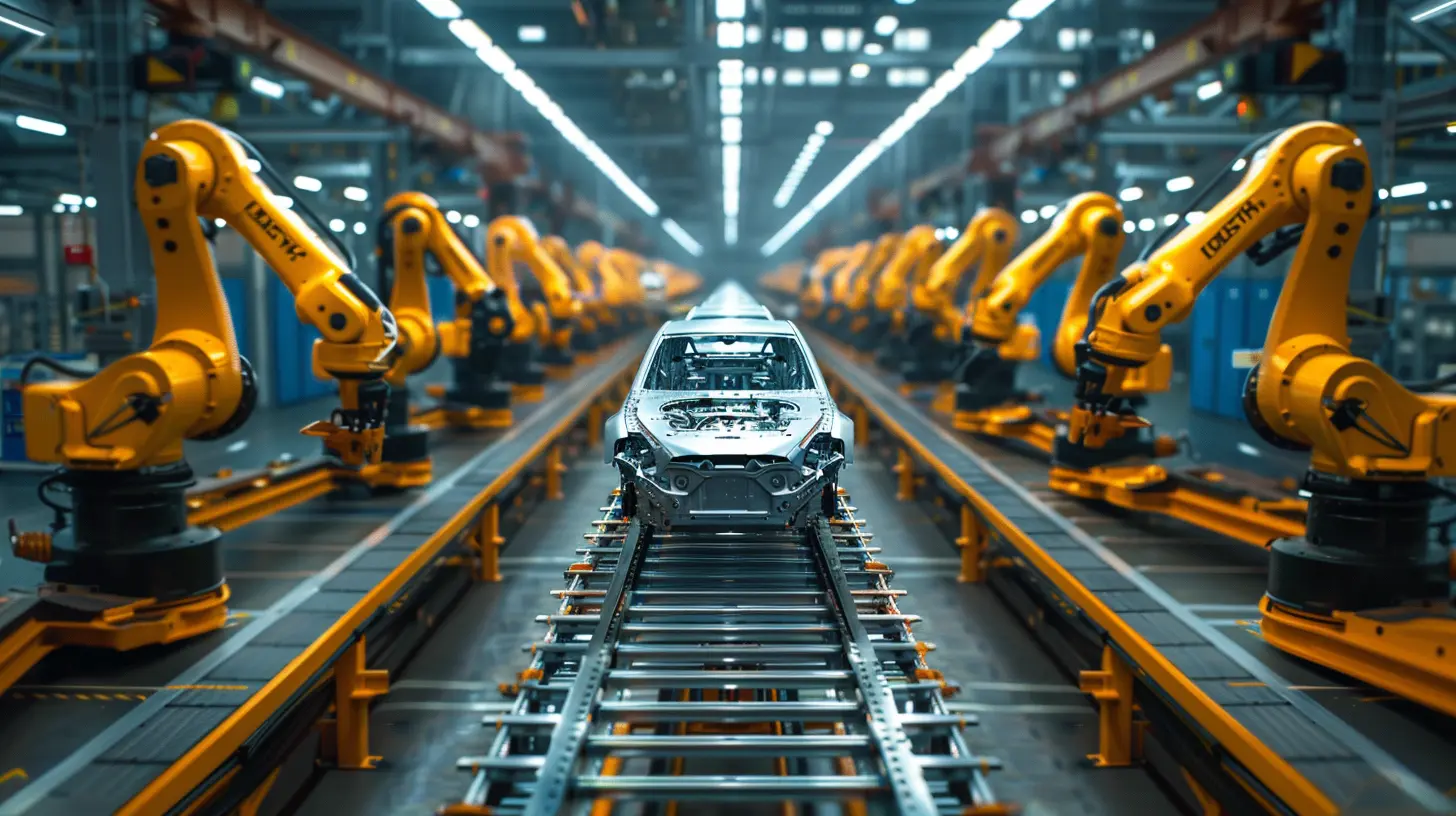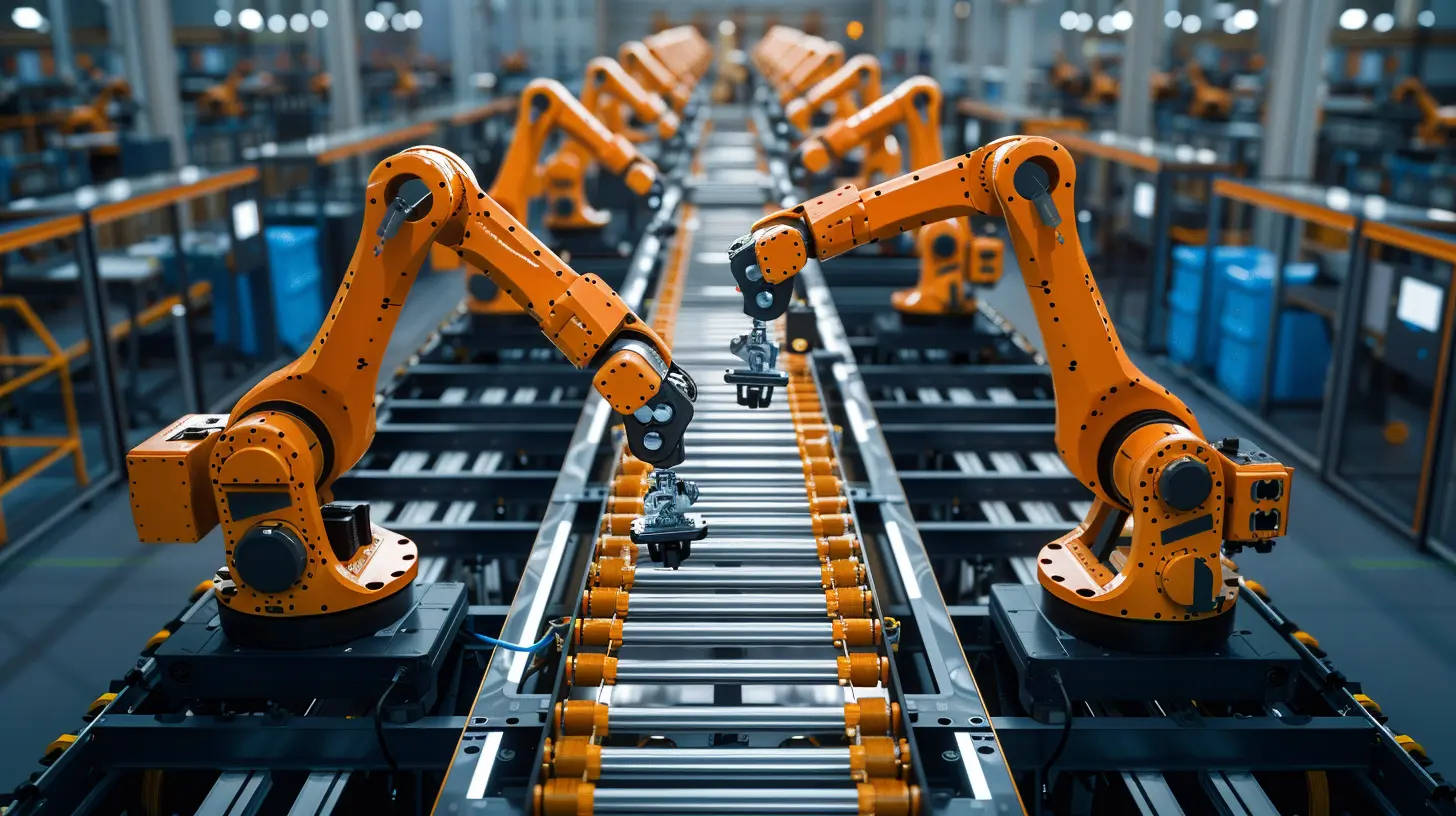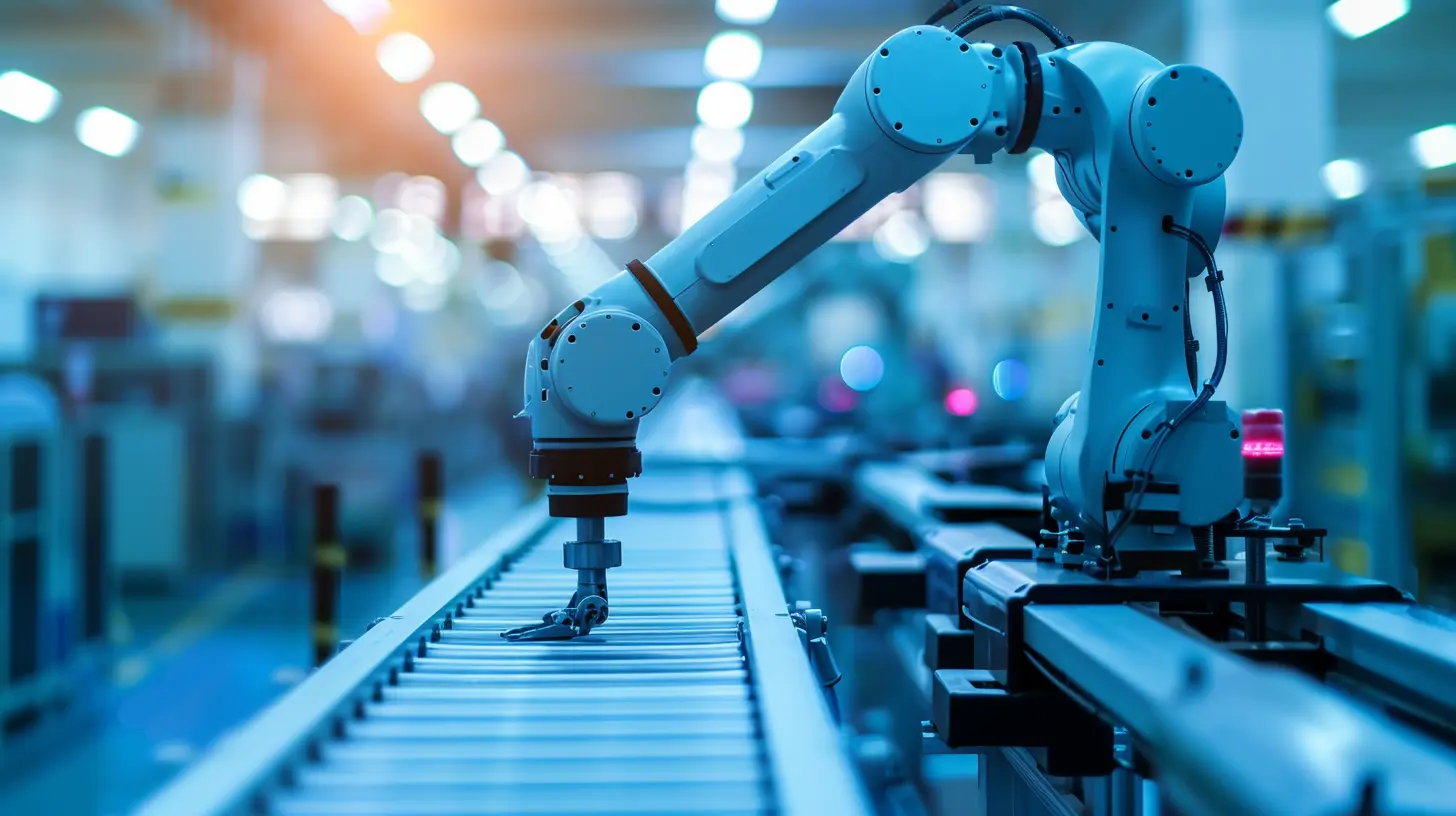How Robotics is Transforming the Manufacturing Industry
6 November 2025
Technology is advancing at lightning speed, and one of the most exciting innovations shaking up the manufacturing industry is robotics. Gone are the days of slow, error-prone manual work. Instead, robots are stepping in to enhance efficiency, precision, and productivity like never before.
From assembling cars to packaging products, robots are revolutionizing the way factories operate. But how exactly is robotics changing the game? Let’s dive into the details. 
The Rise of Robotics in Manufacturing
Robots have been around in manufacturing for decades, but thanks to advancements in artificial intelligence (AI) and automation, they’ve become more intelligent, adaptable, and cost-effective. These machines are no longer just clunky, single-task devices—they’re evolving into smart systems capable of handling complex operations.Why are more factories turning to robotics? Simple—robots can work faster, reduce errors, and operate 24/7 without breaks. This means higher production rates, lower costs, and improved quality. 
Key Ways Robotics is Transforming Manufacturing
1. Increased Efficiency and Productivity
Imagine a factory where machines work seamlessly, without human intervention, assembling products with pinpoint precision. That’s exactly what robotics brings to manufacturing.- Robots can perform repetitive tasks without fatigue, increasing production speed.
- They reduce downtime by working continuously, unlike human workers who need breaks.
- Advanced robotics, paired with AI, can even optimize production schedules for maximum efficiency.
With automation, manufacturers can meet growing demands without compromising on quality or speed.
2. Improved Precision and Quality Control
Humans make mistakes—it's natural. But when it comes to manufacturing, even the tiniest error can lead to defective products and financial losses.- Robots operate with extreme accuracy, ensuring consistency in production.
- AI-powered robots can detect defects in real-time, reducing waste and rework.
- High-tech sensors help robots maintain strict quality standards, improving overall product reliability.
By minimizing human error, robotics ensures that every product meets industry standards.
3. Enhanced Workplace Safety
Manufacturing jobs can be dangerous. Workers are exposed to heavy machinery, toxic chemicals, and repetitive strain injuries. This is where robots step in.- Robots take on hazardous tasks, reducing workplace injuries.
- Cobots (collaborative robots) work alongside humans, handling risky jobs while employees focus on safer, high-value tasks.
- Automated systems can monitor workplace conditions, preventing potential hazards.
With fewer workplace accidents, employers save money on medical costs, compensation claims, and lost workdays.
4. Lower Operational Costs
Hiring, training, and paying employees is expensive. While robots require an initial investment, they quickly pay for themselves by reducing labor costs and improving efficiency.- Robots don’t need salaries, benefits, or breaks, cutting down long-term expenses.
- Automation reduces waste by optimizing material usage, saving money on raw materials.
- Maintenance costs are lower compared to employee turnover and training expenses.
Businesses that invest in robotics enjoy higher profit margins and streamlined operations.
5. Greater Flexibility and Adaptability
Traditional manufacturing relied on fixed processes, making it difficult to adjust to market changes. Robotics, however, brings flexibility.- Modern robots can be reprogrammed to handle different tasks, reducing downtime.
- AI-driven automation adapts to production demands, scaling up or down based on needs.
- Customizable robotic systems allow manufacturers to switch between product designs easily.
This adaptability helps manufacturers stay competitive in a fast-changing market. 
The Role of AI and IoT in Robotics
Robotics isn’t just about mechanical arms assembling products—it’s about intelligence. AI and the Internet of Things (IoT) are taking automation to the next level.- AI-powered robots learn from data, improving their efficiency over time.
- IoT-enabled machines communicate with other devices, creating a connected and smarter factory.
- Predictive maintenance powered by AI prevents equipment failure before it happens, reducing downtime.
With AI and IoT, factories are evolving into intelligent ecosystems that optimize production, minimize waste, and enhance efficiency. 
Challenges of Robotics in Manufacturing
Despite the benefits, robotics isn’t all sunshine and rainbows. There are some hurdles to overcome:- High Initial Costs – Investing in automation can be expensive, making it tough for small businesses to adopt robotics.
- Job Displacement Concerns – While robots create new opportunities, there’s also fear of job losses in traditional roles.
- Complex Implementation – Integrating robotics with existing systems requires expertise, which can be a barrier for some companies.
However, as technology advances and costs decrease, more manufacturers will be able to embrace robotics without major setbacks.
The Future of Robotics in Manufacturing
So, what does the future look like? One word—exciting! Robotics will continue to evolve, bringing even more innovation to manufacturing.- More advanced AI will make robots even smarter and more autonomous.
- Humanoid robots may become common, handling tasks that require human-like dexterity.
- Fully automated factories could become the norm, reducing human intervention to supervision roles.
As robotics technology advances, we can expect increased efficiency, productivity, and a stronger global manufacturing industry.
Conclusion
There's no doubt about it—robotics is revolutionizing manufacturing. Faster production, improved precision, safer workplaces, and lower costs are just a few of the game-changing benefits automation brings.Sure, there are challenges, but the rewards far outweigh them. As robots become more accessible and intelligent, we’re heading towards a future where factories operate seamlessly with minimal waste and maximum efficiency.
The manufacturing world is changing, and robotics is leading the charge. Are you ready for the future of automation?
all images in this post were generated using AI tools
Category:
RoboticsAuthor:

Pierre McCord
Discussion
rate this article
1 comments
Veda Sanders
In steel and circuit’s dance, dreams ignite, Robotics weaves a tapestry bright, Transforming toil with precision's grace, A new dawn for the manufacturing space.
November 9, 2025 at 3:44 AM

Pierre McCord
Thank you for your poetic insight! It beautifully captures the transformative power of robotics in manufacturing.


